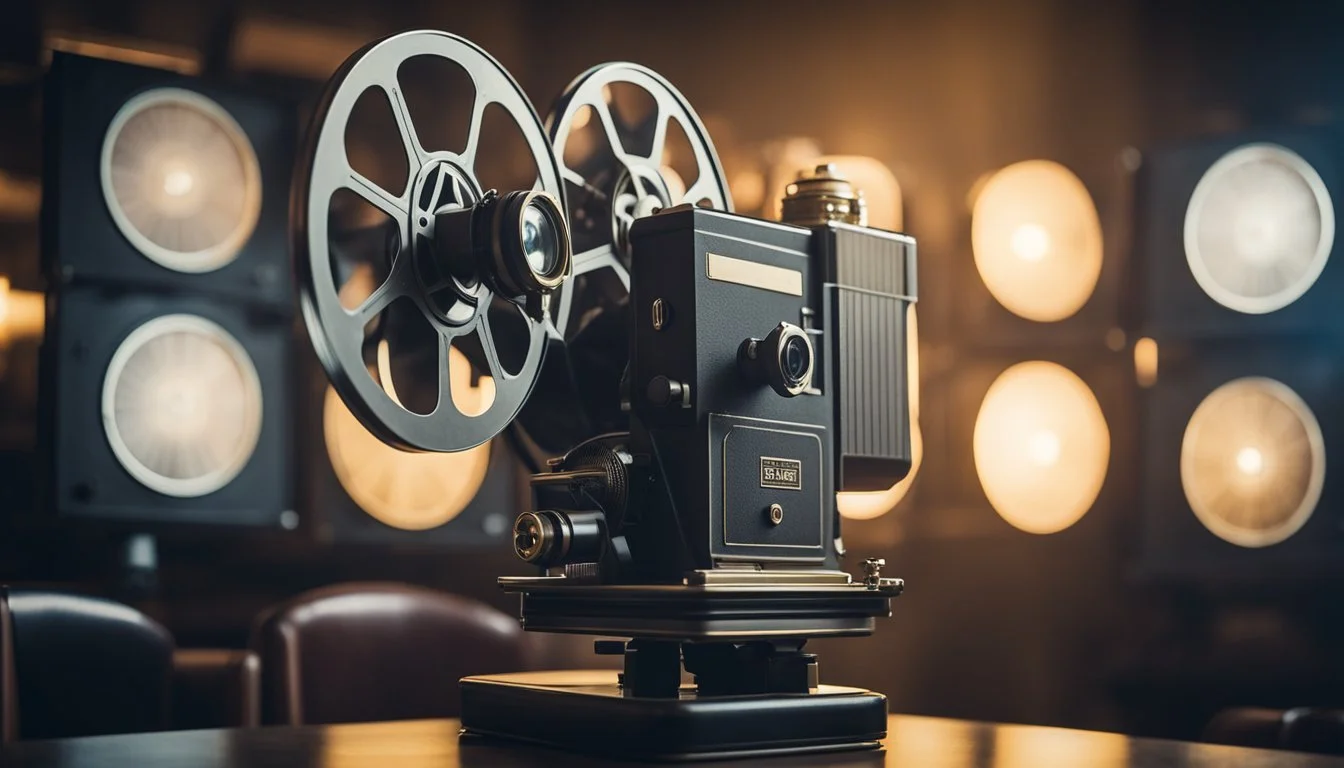5 Films That Explore Authenticity in a World of Facades
Unveiling True Identity
In a world saturated with illusions and facades, cinema acts as a mirror reflecting the quest for authenticity. Films serve as powerful mediums, allowing viewers to ponder the constructs and performances that mask genuine human experience. This article delves into five films that challenge societal masks, offering profound insights into human authenticity.
Through compelling narratives and striking visuals, these films guide audiences to reevaluate perceptions of truth and identity. The exploration of authenticity in these cinematic works provokes thoughts on personal and societal fronts, highlighting the complexities of living honestly in an often-disingenuous world.
1) 'The Truman Show' - Peter Weir (1998)
Peter Weir's 1998 film "The Truman Show" examines the life of Truman Burbank, a man unknowingly living his entire life within a constructed reality television show.
Truman's world is entirely fabricated, overseen by the show's creator, Christof, who manipulates events to maintain the illusion. As Truman begins to notice inconsistencies, his quest for truth sets him on a path towards self-discovery and genuine existence.
The film offers a critique of media manipulation and privacy invasion, themes that resonate with the rise of reality television. With Jim Carrey's compelling performance, "The Truman Show" remains a poignant exploration of how authenticity struggles to survive in constructed realities.
Through its innovative storytelling and philosophical undertones, the film questions the nature of reality, the ethics of voyeurism, and the human desire for authenticity. This thought-provoking narrative invites viewers to reflect on the blurred lines between fiction and reality.
For more information, visit The Truman Show on Wikipedia.
2) 'Synecdoche, New York' - Charlie Kaufman (2008)
Charlie Kaufman's "Synecdoche, New York" is a distinctive exploration of the human experience through its protagonist, theater director Caden Cotard. Cotard embarks on an ambitious project, recreating his own world in a life-sized replica of New York City. This endeavor becomes a reflection of his quest for authenticity amid the complexity of life.
The film delves deep into Cotard's personal struggles and relationships, portraying his challenges in balancing his work with his personal life. It highlights how his commitment to realism blurs the lines between reality and fiction, turning his masterpiece into a labyrinth of facades that mirror his existential dilemmas.
Kaufman's directorial debut invites the audience to reflect on the nature of time, identity, and the pursuit of meaning. By constructing a play within a play, the film questions the boundaries between illusion and reality, leaving the audience to ponder what is genuinely authentic in a world often filled with façades.
Learn more about the film on Wikipedia or IMDb.
3) 'American Psycho' - Mary Harron (2000)
Mary Harron's 2000 film "American Psycho" delves into the theme of authenticity in a world dominated by superficiality.
The film adapts Bret Easton Ellis's novel, weaving a narrative that scrutinizes the facade of 1980s materialism through its protagonist, Patrick Bateman. As an investment banker, Bateman seemingly leads a double life, showcasing both the allure and the horror of such duplicity.
Harron cleverly uses satire to highlight the hollow nature of Bateman's existence. His obsession with appearances and status is a reflection of society's larger preoccupation with image over substance. The film's visual style and narrative structure further emphasize the contrast between appearance and reality.
Christian Bale’s performance as Bateman captures the complexity of living behind a mask. His portrayal underscores the dangers of losing oneself in a persona crafted to meet societal expectations, revealing the darkness that can lie beneath a polished exterior.
The film's impact owes much to Harron's direction and her collaboration with Guinevere Turner in writing the screenplay. Their work brings a sharp, critical eye to the examination of identity in a world fixated on surfaces. "American Psycho" on IMDb
4) 'Fight Club' - David Fincher (1999)
"Fight Club," directed by David Fincher, is a compelling exploration of authenticity in a society dictating conformity. Released in 1999, the film follows an unnamed narrator disillusioned with consumer culture and modern life. He creates an underground fight club with the charismatic Tyler Durden as a form of rebellion.
This film critiques the role identity plays in a commercialized world. By engaging in raw, physical combat, characters aim to reconnect with their primal selves, free from societal expectations. The club becomes a space for genuine human experiences in an artificial reality.
The narrative stands out with its portrayal of dual identities, questioning the masks people wear. The protagonist's journey reveals the conflict between societal facades and true self-discovery.
With its provocative themes, "Fight Club" challenges viewers to reflect on their authenticity in a manufactured world. The film's unique storytelling and vivid dialogue ensure it remains a relevant examination of identity and authenticity.
For more information, visit the Wikipedia page on Fight Club.
5) 'Being John Malkovich' - Spike Jonze (1999)
'Being John Malkovich' is a unique exploration of identity and self, directed by Spike Jonze with a screenplay by Charlie Kaufman. This film delves into the surreal concept of being able to enter another person's mind, specifically that of actor John Malkovich.
The protagonist, a puppeteer played by John Cusack, discovers a portal into Malkovich's mind. This bizarre journey raises questions about authenticity and control over one's life. Through this narrative, the film examines the layers of personas that people adopt.
Cameron Diaz and Catherine Keener deliver compelling performances, adding depth to the exploration of personal identity. 'Being John Malkovich' challenges viewers to question what it means to be truly oneself in a world where people play many roles.
Explore more on Wikipedia.
The Role of Authenticity in Film
Authenticity in film serves as a vehicle for truth, enhancing the depth of storytelling and bridging connections with audiences. Through genuine depictions and narratives, films can resonate more deeply, providing a more immersive and credible viewing experience.
Defining Authenticity
Authenticity in film refers to genuine representation, whether of an individual's character, cultural context, or historical period. It demands a faithful depiction that reflects real-life experiences without distortion. In the realm of storytelling, films achieve authenticity by staying true to their source material, accurately portraying settings, or using real stories.
This concept extends beyond superficial realism, pushing filmmakers to embrace truthfulness at every level. It seeks to provide an emotional and intellectual experience that feels genuine, making the viewer believe in the presented reality. By focusing on sincerity, authenticity distinguishes itself as a marker of quality and truth in cinema.
Impact on Storytelling
Authenticity significantly influences storytelling by reinforcing the narrative's believability. Films that prioritize authentic elements can engage audiences more effectively, making characters and plots feel real and relatable. This approach not only shapes how stories are told but also affects how viewers perceive and interpret them.
Films with authentic narratives encourage audiences to invest emotionally, leading to a more profound impact. By accurately reflecting specific cultures or truths, filmmakers can challenge misrepresentations and promote diversity. Through a sincere commitment to truth, authenticity enhances the narrative's power, thus transforming the cinematic experience for the viewer.
Character Development and Authenticity
Exploring how authenticity is portrayed through character development reveals how films capture the essence of what it means to be genuine amidst societal facades. Films often focus on the tension between realism and idealism in character arcs.
Realism vs. Idealism
Character development thrives on the tension between realism and idealism. Some films emphasize realistic portrayals of characters, capturing the complexities of human nature, while others lean toward idealized versions that highlight aspirations and dreams.
Realistic characters are often flawed, making them relatable and genuine. They reflect real-life struggles, underscoring authenticity through their imperfections. This approach allows viewers to connect deeply, recognizing parts of themselves in these characters.
Conversely, films that lean into idealism can present characters who embody perfection or extraordinary qualities. These characters serve as aspirational figures, inspiring audiences to envision a different reality. The balance between these approaches is crucial for authentic storytelling, as it merges relatable humanity with aspirational elements.
The Protagonist's Journey
The journey of a protagonist is central to portraying authenticity. As characters navigate their quests, they often face challenges that test their principles and values. This personal evolution is integral to exploring true identity and sincerity.
A protagonist's authenticity is often revealed through pivotal moments or decisions that align with their core beliefs. These moments of truth illustrate their genuine nature in contrast to societal expectations.
Films that focus on a character's internal transformation highlight authenticity by presenting growth and self-discovery. The protagonist's journey serves as a metaphorical roadmap for audiences, guiding them through the tensions and triumphs of staying true to oneself in a complex world.
Cinematic Techniques to Portray Authenticity
Filmmakers use various techniques to create a sense of authenticity, ranging from visual storytelling to deeper symbolic mechanisms. These elements contribute to an immersive experience for the audience by enhancing the realism and emotional resonance of films.
Visual Storytelling Elements
In pursuing authenticity, visual storytelling plays a critical role. Cinematographers often rely on natural lighting to evoke realism, mimicking how things appear in daily life. Camera work is another vital tool; handheld shots can intensify the genuine atmosphere by reflecting an unpolished, documentary-like style.
Framing and composition decisions further influence perception. A choice to use close-ups can capture intimate, personal moments, revealing characters' genuine emotions. Directors may select colors and textures that align with specific settings or time periods, enhancing the credibility of the environment.
Additionally, location selection acts as another technique. Real-world settings often offer an unaltered backdrop that enriches the narrative's authenticity. The use of actual locations instead of studio-built sets helps ground the film in reality, adding layers of believability and tangible connection.
Symbolism and Metaphors
Symbolism adds depth, conveying authenticity through layers of meaning beyond what is explicitly shown. Objects or settings can represent broader concepts, providing insight into a character's inner world. For instance, a recurring element might symbolize freedom or entrapment, revealing personal truths.
Metaphorical imagery challenges the audience to interpret the film’s narrative actively. This technique engages viewers, encouraging them to uncover hidden truths that resonate with the filmmaker’s intent. Such elements can encapsulate a character’s journey, reflecting universal emotions and struggles.
These techniques work in harmony to create narratives that feel genuine. By embedding symbolically rich layers, directors can explore themes more profoundly while maintaining an authentic portrayal that resonates with audiences on an emotional level.








